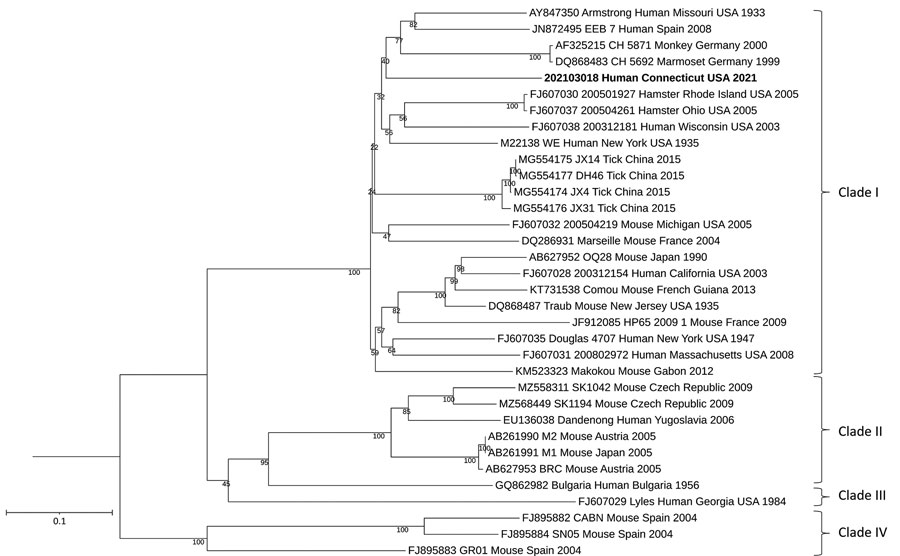Volume 29, Number 9—September 2023
Dispatch
Lymphocytic Choriomeningitis Virus in Person Living with HIV, Connecticut, USA, 2021
Figure 2

Figure 2. Maximum-likelihood analysis of the full small genome segment of lymphocytic choriomeningitis virus (LCMV) sample from a patient in Connecticut, USA (bold), compared with reference sequences. Branch nodes provide the bootstrap support values, as a percentage. Clades are indicated at right, and GenBank accession numbers are provided for reference sequences. Scale bar indicates number of substitutions per site.
Page created: July 11, 2023
Page updated: August 20, 2023
Page reviewed: August 20, 2023
The conclusions, findings, and opinions expressed by authors contributing to this journal do not necessarily reflect the official position of the U.S. Department of Health and Human Services, the Public Health Service, the Centers for Disease Control and Prevention, or the authors' affiliated institutions. Use of trade names is for identification only and does not imply endorsement by any of the groups named above.